A night to remember: Wuzhen’s Wedding Museum
Wuzhen, by anyone’s definition, is a pretty little town – and doesn’t it know it! All the best scenic areas have been pulled together into two areas for which you are normally charged an entrance fee. Is this the reason there is a handful of museums in both – so that punters can feel like they are getting their money’s worth by being allowed free entrance to the museums?
Maybe I am being somewhat cynical… (what? Your favourite blogger cynical? Surely not!) but taking the Wedding Museum as an example, one is left with the distinct impression that this was set up purely for the tourists. Well, why ever not!
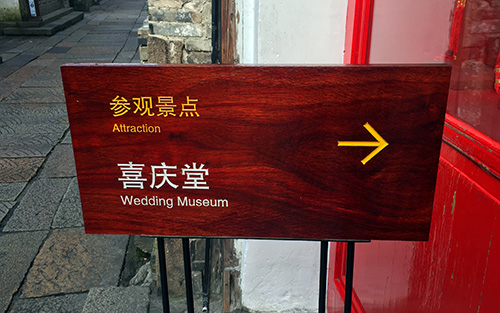
Located on Xizha Street, the Wedding Museum claims to be the first museum to “display the act of marriage as it was historically conducted in this area”. It is housed in a two-storey building that has four entrances and four courts.
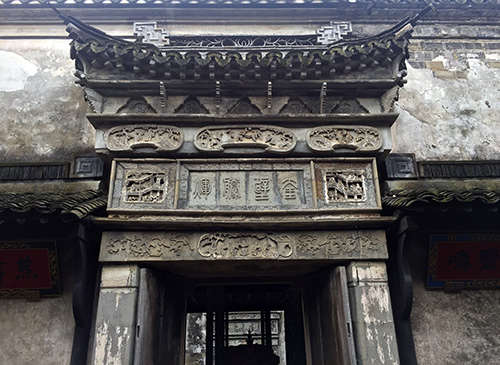
The blurb tells you that the museum “consists of the front hall, the wedding hall, the meeting hall, the sedan hall, the worship hall, the coloured pavilion, the bridal chamber and the back garden. In these rooms the dowry, decorations, tools, furniture, costumes, jewellery, wedding boats, and musical instruments used during marriage are on display.”
Here is a collection of bathroom mirror boxes…
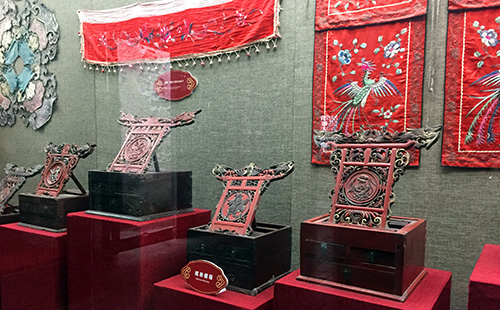
Meanwhile this elegant wardrobe would not look out of place in your favourite blogger’s residence.
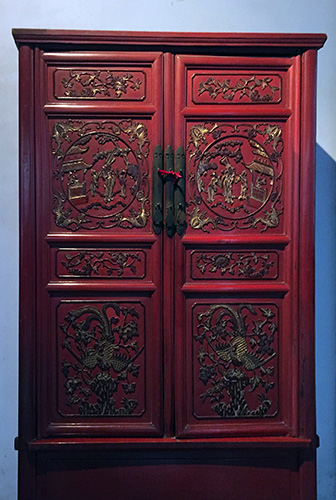
There is a small selection of bridal sedan chairs, such as this one, arranged for a wedding ceremony. “Red silk is usually chosen for the curtain of the sedan chair on which there are embroidered patterns with special auspicious meanings,” we are told – though what those auspicious meanings are, the museum is tight lipped about this.
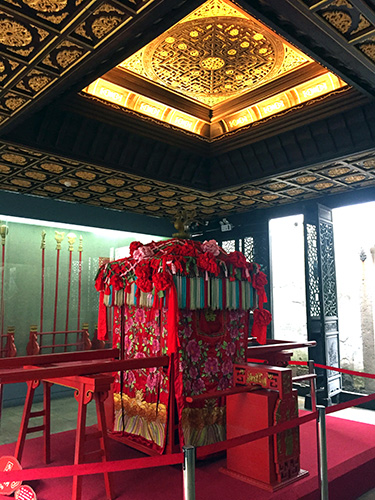
There are also painted and carved panels on show, though again there is little to tell us about where or how they were used.
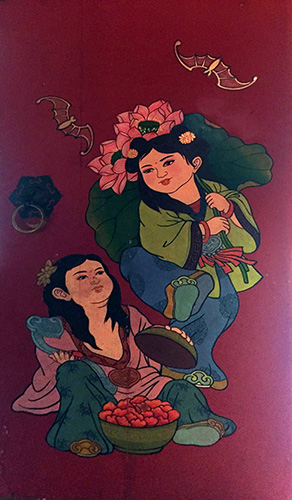
Some of the doors leading off into the courtyard have pretty reliefs carved into them – though I notice that the birds are not storks. Again these would not look out of place in the Salter residence…
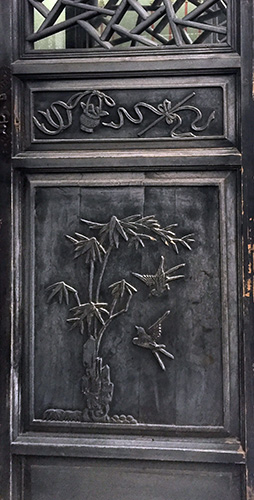
One gets the impression that the courtyard could look a lot smarter with a minimum of tidying up; but I guess this museum is all about weddings, rather than the beauties of nature.
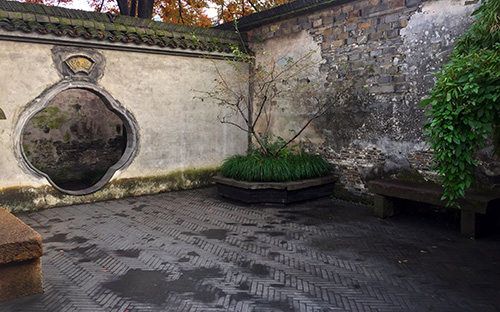
It even has a lookout perch “decorated”, if that is the right word, with some verdigris-coloured rockery. I’m not sure I’d want that in my garden.

Of course, being a wedding museum, it would not be complete without shots of happy couples …
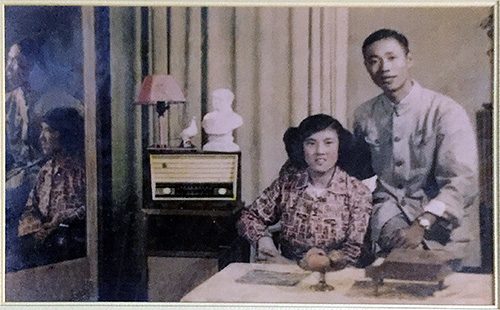
There is also a gallery full of wedding certificates
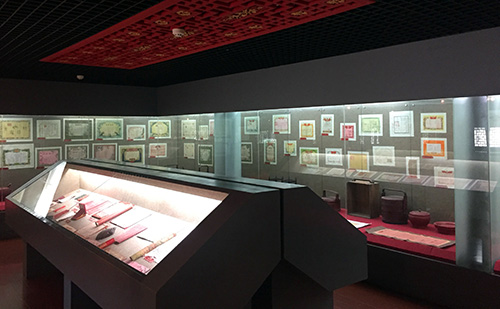
and wedding registration documents, but again little in the way of documentation.
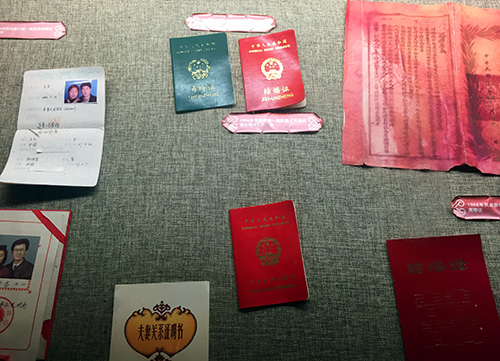
And of course you would expect a display of food boxes since, as the accompanying notice tells us, “It’s a kind of dowry to put food”.
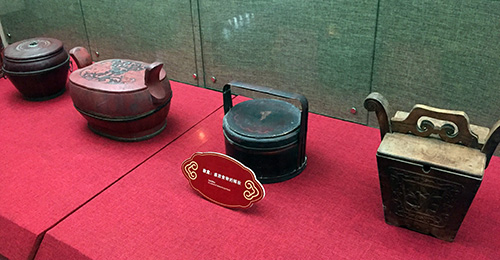
And what historical museum would be complete without a picture of happy peasants?
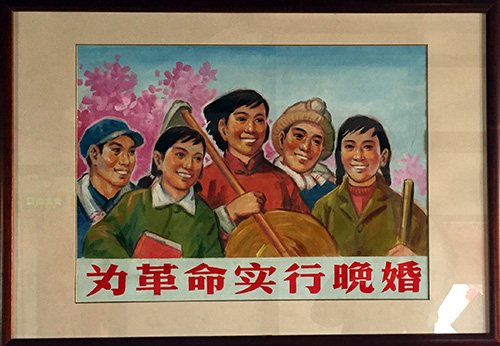
(Not to mention happy landlords in times gone by.)
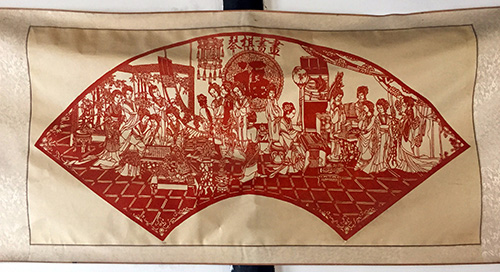
Upstairs there is another wedding sedan, which is quite elegant. The blurb on the notice tells us that it is “regarded as a special transportation vehicle in South China. It is wooden structure and in the shape of a pagoda”.
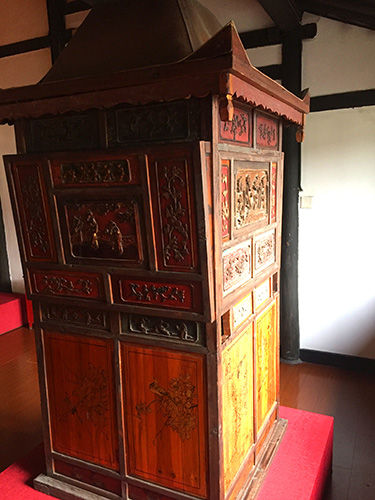
I particularly like a washstand which reminds me of chairs by the renowned Scottish designer Charles Rennie Machintosh which he made at the end of the 19th century. This one, we are told, is “a piece of furniture and made for holding a wash basin and towels,” – though where you put the towel I am still left wondering.
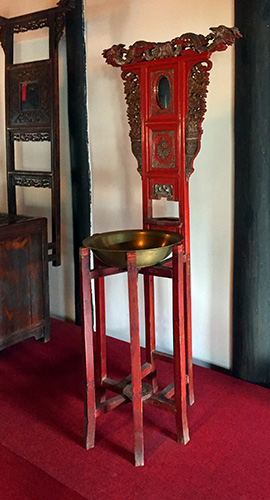
Finally there is a rather splendid Phoenix Coronet on display in a shabby glass case which must have turned a few heads in its day (the coronet, that is, not the shabby glass case). A phoenix coronet is said to have enjoyed a supreme position among female fashionistas. Over a long period of time, it was regarded by women as “the tiptop glory to wear the phoenix coronet and the cape. The former almost became the synonym for a noble lady.”
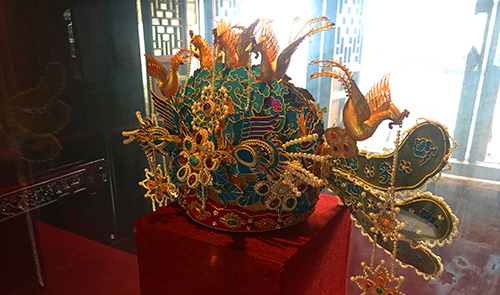
It is at this point that perhaps I should add that I was almost certainly the first visitor of the day to enter these portals. Reading more of the blurb offered by the Wuzhen tourism gurus, “visitors can even participate in the wedding experience themselves. And worthy of mention in the museum are the interactive games for tourists. These include tossing the bouquet (an embroidered ball in this case), shaking the sedan chair while carrying the bride, and jumping over the wall to meet your love. By partaking in these traditional wedding activities, visitors can experience the hardships of courting followed by the happiness of a lifetime together. By doing so, one can understand why the wedding night is traditionally considered one of the most important moments in life.”
My mind is working overtime, imagining jumping over walls and experiencing the hardships of courting before indulging in a lifetime of happiness. So this is why the wedding night is considered such an important moment? I feel older and wiser now.
